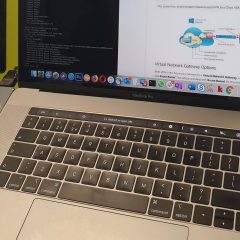Mac: No Captive Portal
KB ID 0001780 Problem I was on a train today, and they were offering free Wi-Fi but despite me being able to connect, I had no internet access. This has happened a few times to me and it’s when I need to connect to a captive portal to get internet access, then no captive portal ever appears. Note: A captive portal is just a pop up window that you usually see on ‘Free’ wifi services, so you can ‘Pay’ for...
Users Cannot Access Public Folders Post Migration (Exchange 2016)
KB ID 0001295 Problem This post comes form my colleague Andrew Dorrian, he usually follows my migrating public folders article. Recently after a couple of Exchange 2016 migrations he has seen a problem where the public folders are visible in the Exchange Admin Console, but the users can’t access them. Solution Open ADSIedit.msc and connect to the ‘Configuration’ context. Navigate to; CN=Services > CN=Microsoft...


